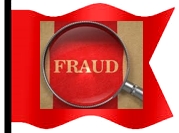Frank Benford published “The Law of Anomalous Numbers” in 1938.
It postulated that the lower the leading digit of a number, the more often it would appear. Frank Benford used data from rivers, populations, newspapers, cost data, addresses, and many other categories to confirm his theory.
It applies only to “natural numbers.” The definition for natural numbers and non-natural numbers in a fraud examination are different than they are in math. Here’s how we define them for Benford’s Law: Natural numbers are those numbers that are not ordered in a particular numbering scheme and are not human-generated or generated from a random number system. Non-natural numbers are designed systematically to convey information that restricts the natural nature of the number (e.g., postal codes and telephone numbers and random number generators).
Today Benford's Law is used by many Fraud Examiners and Forensic accountants, to narrow down where fictitious numbers and possibly where Fraud may have occurred in financial statement accounts. Many Internal Control Managers use Benford's Law to periodically monitor their own financials, in order to follow up early on all suspicious activity.
Quickly determine any variance on any natural occurring numerical data; sales, inventory, expense accounts, balance sheets, real estate appraisal data, financial trading accounts, etc.
The mathematics of Benford's Law is explained here.This is a cool tool !!
 Hire Us
Hire Us


